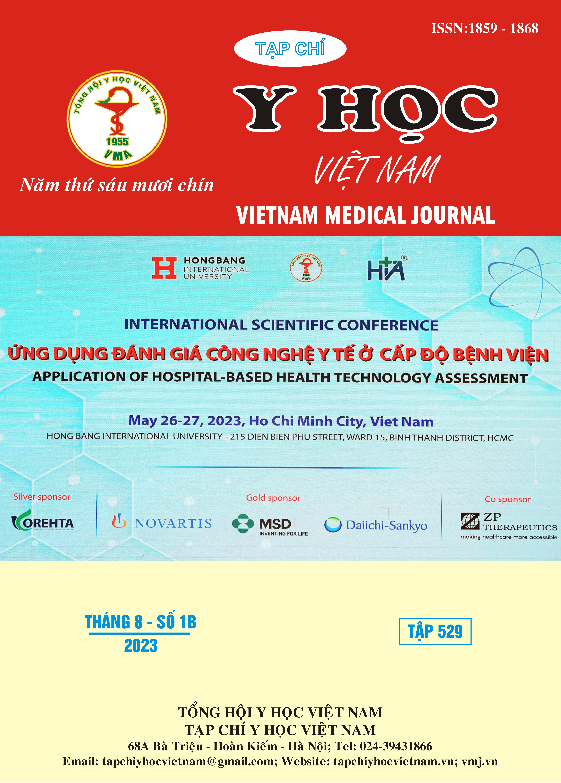ASSESSMENT OF THE EFFECTIVENESS OF WORLD HEALTH ORGANIZATION STANDARD TREATMENT PROTOCOL FOR LEPROSY REACTIONS IN HO CHI MINH CITY
Main Article Content
Abstract
Background: Leprosy reactions is one of the main causes of impaired motor function, sensory disturbances, and autonomic nervous system disorders. Objectives: assess the effectiveness of the WHO standard treatment protocol for reactional leprosy in Ho Chi Minh City over the period from 30/06/2006 to 30/06/2016. Materials and Methods: A series of cases were studied among patients with leprosy reactions managed in Ho Chi Minh City. Results: Treatment response evaluation based on the sensory test showed that 38.3% of patients did not respond to treatment, 10.5% had a complete response, and 48.8% were classified as normal. Evaluation of treatment response based on disability grading revealed that 32.6% of patients did not respond to treatment, 8.1% had an incomplete response, 10.5% had a complete response, and 48.8% were considered normal. Only the average number of treatment weeks showed a statistically significant difference in response evaluation based on disability grading. Conclusions: The proportion of patients who did not respond to treatment according to the WHO standard protocol was relatively high. Further expanded research with a larger number of patients is needed to clarify the findings of this study.
Article Details
Keywords
Leprosy, leprosy reactions, reversal reaction, erythema nodosum leprosum
References
2. Naafs B (2006) Treatment of Leprosy: science or politics? Trop Med Int Health 11: 268–278 doi:10.1111/j.1365-3156.2006.01561.x.
3. WHO (2020), “Leprosy/Hansen Disease: Management of reactions and prevention of disabilities”. Technical guidance.
4. Bilik L, Demir B and Cicek D (2019) Leprosy Reactions. Hansen’s Disease - The Forgotten and Neglected Disease. IntechOpen. DOI: 10.5772/intechopen.72481.
5. Raffe SF, Thapa M, Khadge S, Tamang K, Hagge D, Lockwood DN. Diagnosis and treatment of leprosy reactions in integrated services--the patients' perspective in Nepal. PLoS Negl Trop Dis. 2013;7(3):e2089. doi: 10.1371/journal.pntd.0002089.
6. Lambert SM, Nigusse SD, Alembo DT, Walker SL, Nicholls PG, Idriss MH, Yamuah LK, Lockwood DN. Comparison of Efficacy and Safety of Ciclosporin to Prednisolone in the Treatment of Erythema Nodosum Leprosum: Two Randomised, Double Blind, Controlled Pilot Studies in Ethiopia. PLoS Negl Trop Dis. 2016 Feb 26;10(2):e0004149. doi: 10.1371/journal.pntd.0004149.
7. Mittal A, Singh Dhanota DP, Saggar K, Ahluwalia A. Brachial plexopathy with ulnar nerve abscess in leprosy: A case showing importance of magnetic resonance neurography with clinical, imaging and histopathological correlation. Indian J Dermatol Venereol Leprol, 2022;88:385-8.


